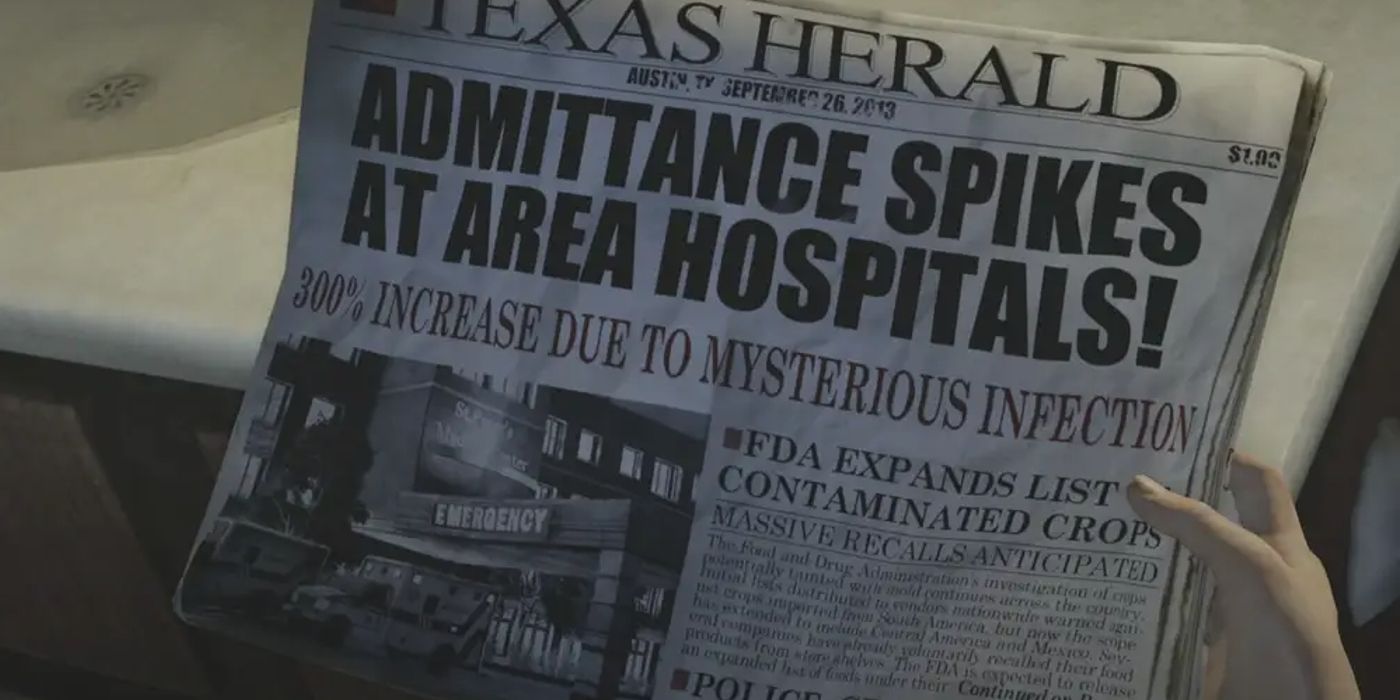Warning! This article contains spoilers for The Last of Us episode 3.The Last of Us episode 3 provides more details about how the Cordyceps infection spread worldwide, linking to a concept first introduced in the original game. While The Last of Us episodes 1 and 2 have followed the game very faithfully, the major differences have come from HBO's explanation of the Cordyceps infection that decimated mankind. The opening sequence of The Last of Us episode 1 featured John Hannah in a terrific cold opening that tied the infection to global warming, something not included in the game.
This only continued with the show's second episode. The opening sequence of The Last of Us episode 2 in Jakarta, Indonesia continued changing the infection's origin by moving the epicenter of the Cordyceps infection to Asia as opposed to South America, in order to align with the real-world fungi's habitat more closely. While The Last of Us episode 3 is the first not to feature a flashback related to the Cordyceps infection's origin, some dialog between Joel and Ellie reveals some further details that link to both the game's version of the condition and HBO's.
How The Cordyceps Infection Was Spread Worldwide Through Flour
The explanation from Joel in The Last of Us episode 3 surrounding the spread of Cordyceps links to a concept introduced in the game. Joel explains that Cordyceps mutated, linking to John Hannah's character's scene in The Last of Us episode 1. The Cordyceps then infected food supplies across the world, such as flour or sugar, which were then distributed in the foods made from the infected crops. Regular shelf items such as bread or cereal carried the infection which, when enough was ingested, made people become infected.
Joel also explains some details on how this spread resulted in the outbreak day seen in The Last of Us episode 1. As has been made clear in The Last of Us thus far, the infection begins taking hold very quickly once entering a human host. Foods ingested on Thursday the 25th or Friday the 26th of September resulted in infected hosts beginning to spread the virus on the night of the 26th as was showcased in The Last of Us episode 1's opening sequence. Joel states that by the following Monday, everything was gone and the world devolved.
Last Of Us Episode 3’s Infection Similarities & Differences With The Game
This explanation has differences from The Last of Us game, as well as some notable similarities. In terms of differences, it is mainly the idea that the infected crops began in Jakarta, Indonesia that marks the biggest difference from the game's infection origins. A newspaper that can be obtained in Joel's home in the original game states that the crops came from South America, and began being recalled after infections began. The change to Indonesia, as well as the global warming mutation, mark the biggest Cordyceps infection differences in the show.
When concerning similarities, the inclusion of the infection spreading through food items across the world is largely kept the same. In the aforementioned newspaper from the game, it is revealed that infected crops held the infection which spread mainly to areas of Central America and North America, but also that The Last of Us' fungi Cordyceps was being found in other continents. As Joel explains in The Last of Us episode 3, this concept was kept the same albeit with a change in location.
Is The Last Of Us' Infection Spreading Via Flour Based On Real Science?
This explanation begs the question of whether it is based on real science. One thing that HBO's The Last of Us has done extremely effectively is explain the Cordyceps infection in a way that seems terrifyingly realistic. From the cold opens of both episodes 1 and 2, The Last of Us makes it highly believable that the events of the series could transpire in real life. This only continues with The Last of Us episode 3, as the fungal infection spreading via food supplies could also really happen.
This is supported by The Last of Us episode 2's opening, in which Professor Ratna describes the flour and grain silo in which the infections began as a "perfect substrate". In biology, a substrate is a base on which certain organisms live, including fungi. Fungi are known to use grain products as substrates, such as brown rice, rye grain, or popcorn. This makes it incredibly realistic that a mutated fungi strain could use grain and flour as a substrate which is then ingested by humans to cause the infection. This only goes to further the chilling, real-world-based elements of The Last of Us that makes Cordyceps increasingly terrifying.
New episodes of The Last of Us release every Sunday on HBO.




